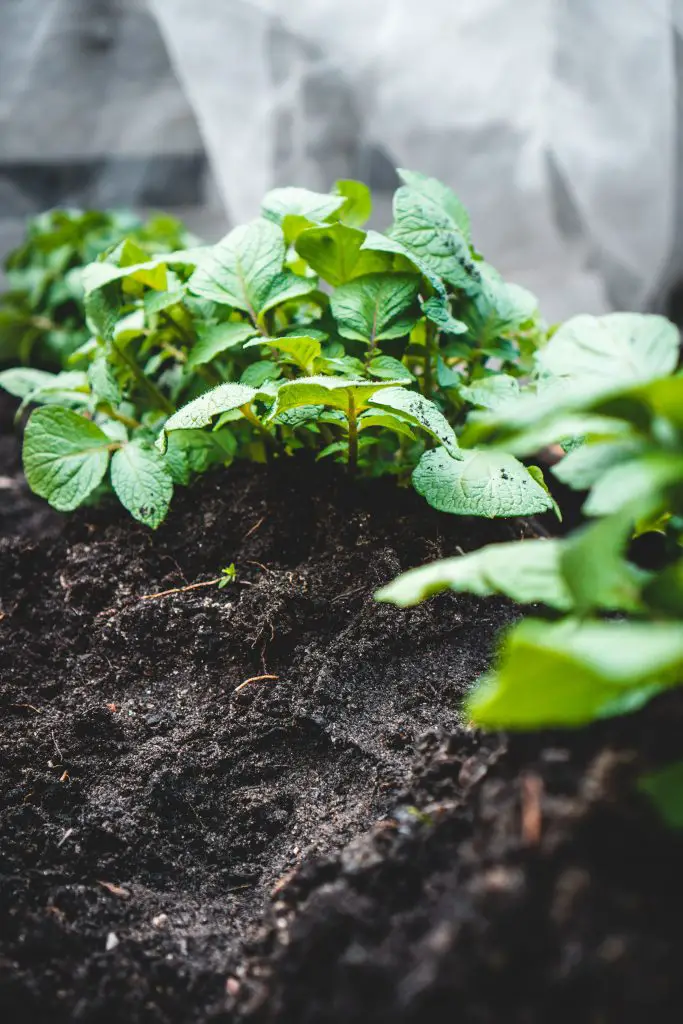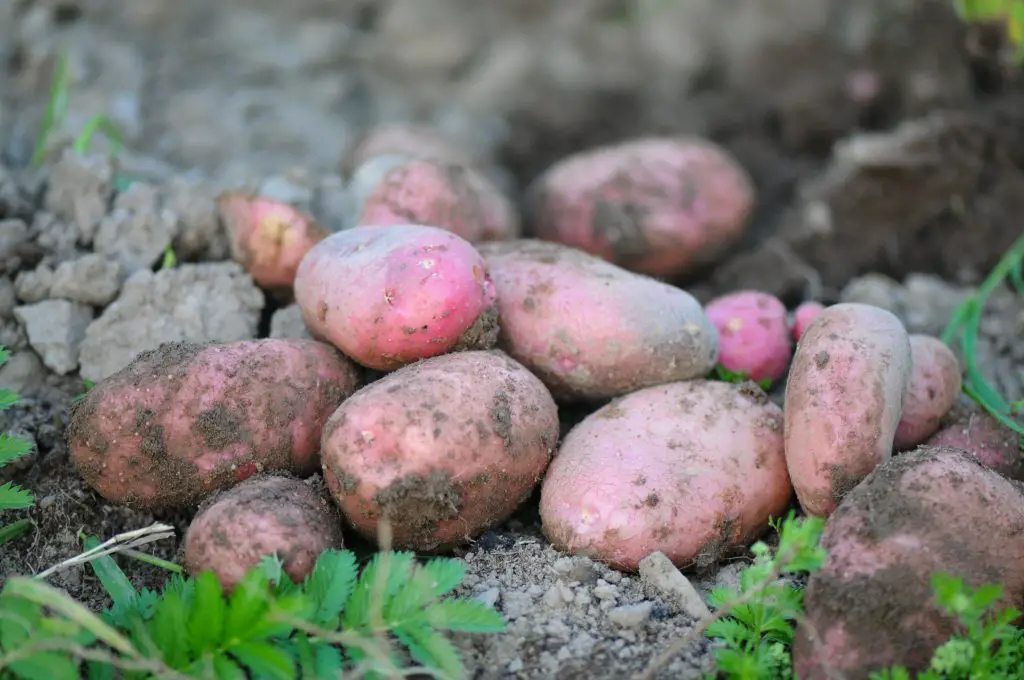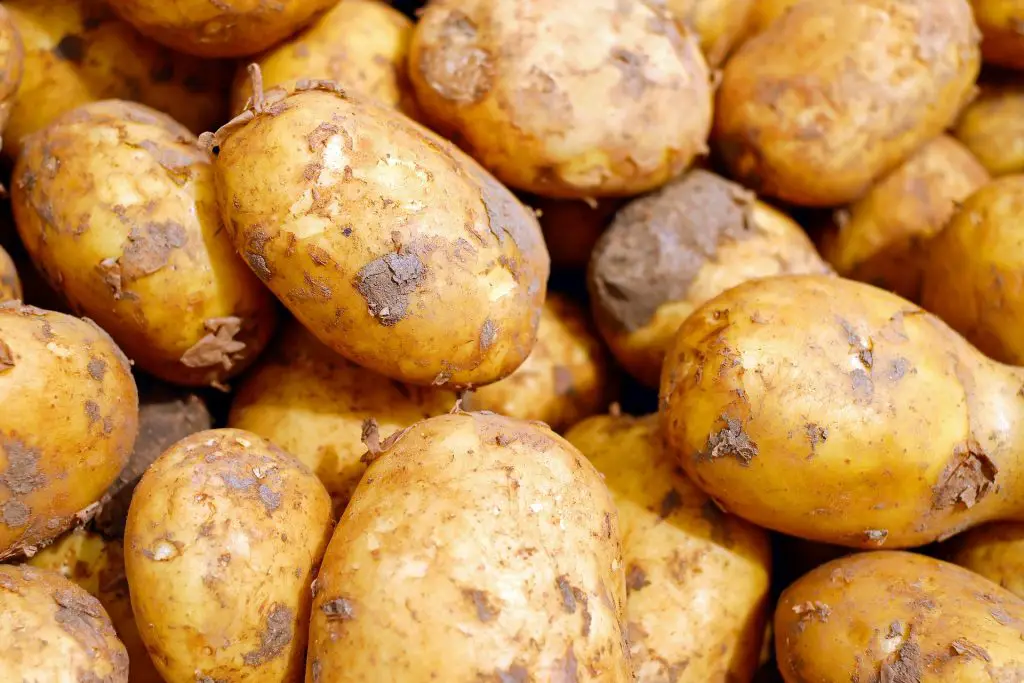How Much Sun Do Potatoes Need? Potatoes are one of the most popular vegetables to grow in the garden, however for those gardeners with limited space or lots of shady locations it is important to understand how much light is really required to produce potatoes.
Potatoes need approximately 10 hours of sun a day to produce an optimum yield, however, a reasonable yield can be obtained with around 7 hours a day of sun per day. This is based on a study by University of Hohenheim conducted in the southern part of Germany. The study found that the yield was largely unaffected when the volume of shade is less than 26%. Given that the daylight hours in this region during a growing season average around 14 hours per day this equates to just over 10 hours per day.
However, the results from this study also suggest that reducing the sunlight to around 7 hours a day (50% shade) will produce around 80% of the expected yield. A graph of the findings is provided below.

However, the yield is also dependent upon a number of other variables which include soil conditions, the variety grown, whether you earth-up or chit the potatoes. So there are a few things that can be done to minimize the effect of planting in a partially shaded location.

How To Maximize Potato Yield
As mentioned above there are several things that you can do to improve the yields of potatoes.
Fertilization
Low soil fertility is one of the contributing factors that will affect your potato yield most significantly. A review article published in the International Journal of Agriculture Sciences looked at numerous studies from all around the world and concluded that the potato yield can in some cases be increased by up to 50% when sufficient nutrients are present in the soil.
For the home gardener, it is generally recommended that compost or well-rotted manure be added along the base of the trench to the soil prior to planting this is usually sufficient to produce a decent crop.
Selection Of Varieties
The choice of variety grown can also have a significant effect on the volume of potatoes grown. Potatoes are normally divided up into early potatoes and maincrop potatoes. Early potatoes which are often grown in pots take approximately 10 to 12 weeks to produce a crop. The quantity of potatoes produced typically varies between 300 to 500g (approximately 0.5 to 1 lb).
However, as there are literally hundreds of varieties it is impossible to test them all however Royal Society of Horticulture in the UK completed a trial on 20 commonly available varieties. Out of these varieties tested eight received an Award of Garden Merit. The results of the top eight varieties are provided in the table below.
| Variety | Yield Per Seed Potato (g) | Average Tuber Weight (g) |
| Lady Christl | 508 | 36 |
| Sharpes Express | 490 | 37 |
| Vales Emerald | 470 | 37 |
| Casablanca | 468 | 44 |
| Jazzy | 450 | 25 |
| Maris Bard | 430 | 41 |
| Golden Nugget | 420 | 26 |
| Charlotte | 380 | 40 |
Maincrop potatoes as the name suggest produce much larger quantities of potatoes, in my own garden I typically get 2 to 2.5 kg per seed potato which is reasonably consistent with Royal Society of Horticulture trials that varied between 1.7 to 3.2 kg.
In the 1993 RHS trial 26 varieties of potatoes were tested and 7 varieties were given the Award of Garden Merit. These varieties were;
- Avalanche
- Croft
- Famosa
- Picasso
- Stroma
- Navan
- Maxine
The results of the 8 highest yield varieties is provided in the table below which are not necessarily the varieties selected by the RHS panel. Panel members look at other factors such as appearance and flavor as well as yield.
| Variety | Yield | % Small | % Medium | % Large |
| Charisma | 3.2 kg (7.0 lb) | 2 | 21 | 77 |
| Picasso | 2.7 kg (6.0 lb) | 3 | 44 | 53 |
| Stemster | 2.7 kg (6.0 lb) | 3 | 40 | 57 |
| Valer | 2.7 kg (6.0 lb) | 4 | 54 | 41 |
| Avalanche | 2.6 kg (5.8 lb) | 4 | 68 | 28 |
| Croft | 2.4 kg (5.4 lb) | 6 | 79 | 15 |
| Navan | 2.4 kg (5.4 lb) | 4 | 42 | 55 |
| Heather | 2.4 kg (5.4 lb) | 2 | 57 | 40 |
In additional to the varieties listed above, I would also recommend the variety King Edward which is the one I grow in the garden every year. It produces a consistent crop of medium-sized potatoes.
Earthing-up Potatoes
Earthing up potatoes (or hilling) is another thing that can be done to improve the yield of potatoes that makes a surprisingly large difference to the yield achieved. An Iranian study in 2010 indicated that the yield can be increased by 30% to 70%. This technique increases both the size and number of the potatoes produced.
Additionally, earthing up potatoes also improves the quality of the tubers as exposure to sunlight will cause the tubers to turn green and become poisonous.
The reason this is an effective method of increasing the yield is because mounding of soil around the above-ground stems encourages these sections of the stems to start producing tubers rather than leaves which increases the number of tubers produced.
The size of the tubers is also affected because the earthing-up increases the length of time that the tubers spend underground which in turn increases the length of time that tubers have to grow and develop. The results from the study are provided in the table below, all results presented are in grams.
| Variety | Av. Tuber Size (Control) | Av. Tuber Size (Earthed-Up) | Tubers Per Plant (Control) | Tubers Per Plant (Earthed-up) | Total Yield (Control) | Total Yield (Earthed-Up) |
| Arinda | 177.6 | 196.5 | 5.8 | 7.7 | 1030.1 | 1513.1 |
| Sante | 231.5 | 281.5 | 7.1 | 8.8 | 1643.7 | 2477.2 |
| Marfona | 213.6 | 233 | 6.5 | 7.7 | 1388.4 | 1794.1 |
| Ramous | 240.0 | 301.5 | 7.9 | 11.0 | 1896.0 | 3316.5 |

Chitting Potatoes
Chitting potatoes is another common technique that is used to improve the yield of potatoes though there is often debate among gardeners as to how effective it really is. The reason for this debate is that it greatly depends upon the circumstances in which chitting is done.
For the benefit of the uninitiated chitting is the process where seed potatoes are exposed to light a few weeks prior to planting. This causes the seed potato to produce sprouts prior to going into the ground. This really only makes a significant difference when growing early potatoes (first or second early varies).
The chitting accelerates the growth of the seed potatoes which makes a significant difference to the size of the potatoes in the early part of the season. However, the longer the potatoes spend in the ground the less benefit there is. This is largely because the unchitted potatoes catch up over time, so little difference is seen in main crop potatoes.
To read more about the precise factors that influence yield on early potatoes that are chitted click here.
How To Grow Potatoes
If you are a beginner gardener wanting to start off with an easy vegetable to grow you really can’t go past potatoes. They produce a large reliable crop every time. The only significant problem that you may encounter is potato blight which is common in places like the UK and even in these circumstances, it is possible to get a crop in most cases.
The first step is to purchase seed potatoes. There is a range of potatoes that can be purchased online from Amazon or from plants specialists such as a Thompson & Morgan in the UK. It is generally not a good idea to plant store brought potatoes as they will increase the risk of disease. To read more about this click here.
To plant the seed potatoes start by digging a 30 cm (1 ft) deep trench. Place the seed potatoes at the bottom of the trench about 50 to 60 cm (2 ft) apart for maincrop potatoes and 30cm (1 ft) apart for early potatoes and cover them over with soil. Planting is best done in early spring around a month prior to the last frost of the season.
The first shoots should appear after a few weeks. As the shoots get taller it is advisable to mound up soil around the stems of the plants. However, when doing this it is important to ensure that the top of the plant is still visible as this will allow the plant to continue to photosynthesize.

After several weeks flowers will begin to appear. Allow the plant to remain in the ground for a further 4 weeks before beginning to harvest the Potatoes. When harvesting the potatoes just harvest one plant to start with as it will give you a good idea if you need to leave the other plants for longer.
When harvesting it is best to use a fork or harvest by hand rather than using spade as it is common to cut tubers in half as using a spade.. It is also generally a good idea to be as thorough as you can when it comes to removing tubers from the ground, as even the smallest tubers that are left behind will sprout the following year.
Additionally, the potatoes can be left in the ground during the growing season and harvested as required. However, once the top growth completely dies back it is advisable to dig all the potatoes up as they will not grow any further.
Main Crop Potatoes can be stored for an extended period of time if they are stored in a cool dark place that is ventilated. Storing in a hessian sack is ideal, which can be purchased from Amazon. Avoid storing them in sealed plastic containers as they have a tendency to sweat causing mold.
Related Articles
Can You Cut Seed Potatoes in Half?
Can I Plant Store Bought Potatoes?
What Are The Best Potatoes To Grow In Bags?
Can You Plant Old Potatoes That Have Sprouted?
Does Earthing Up Potatoes Improve Yield? Is It Worth Doing?
Are Potatoes A Root Vegetable?
How Late Can You Plant Potatoes? (And How To Maximize The Yield)
Can You Compost Potatoes? Or Will They Start Growing?
